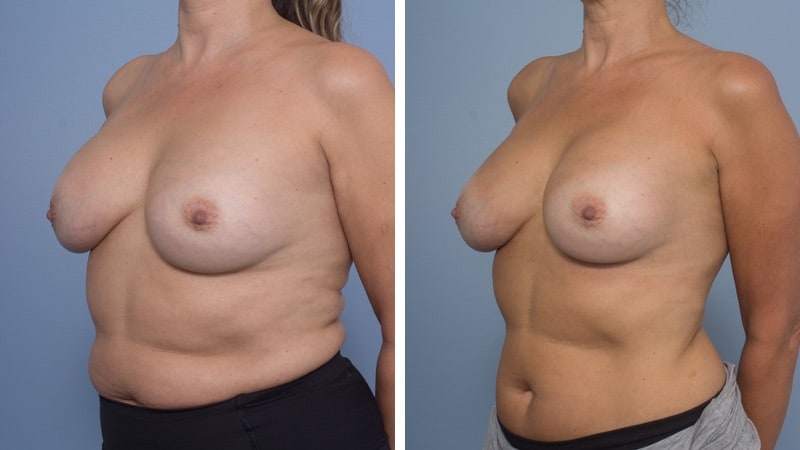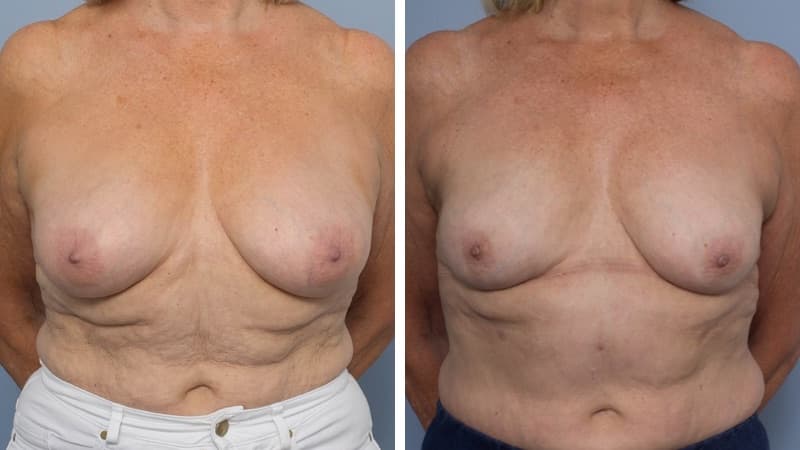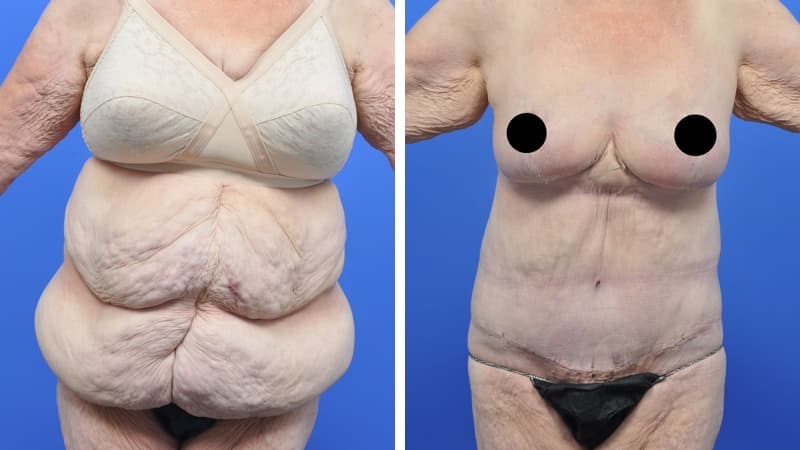The basics
Breasts often lose their shape and firmness over time, particularly after pregnancy and breastfeeding or after weight loss.
Breast lift, or mastopexy is the surgical procedure used to raise and reshape the breasts.
It can also reduce the size of the areola, the skin surrounding the nipple. Some patients ask for breast augmentation with implants in addition to a lift, to increase breast size or upper pole fullness.
What can I expect to achieve?
The main challenge in breast lift surgery is to produce a long lasting result, and to achieve adequate filling of the upper part of the breast.
Patients with very loose skin and saggy breasts tend to have weak, easily stretched tissue – which is why they have the problem in the first place. So, despite the best efforts of the surgeon, the breast will, in some cases, sag again after surgery, at least to some degree.
Virtually all saggy breasts can be improved with a lift, however a full, firm and youthful appearance may not be possible, and it is important for patients to have realistic expectations of what can actually be achieved for them.
Patients who have lost a lot of weight present special challenges. If the breast skin has been overly stretched, two operations may be needed to produce the best possible result. We will discuss this fully during consultation.
After surgery, it takes around four months for the breast to settle into its new form, and at least a year for the scars to fade. Though most scars will fade significantly, patients who have the genetic predisposition to heal with poor scars may have visible scars for life.
Over time, if your body shape changes significantly or you have pregnancies, there may be a need for a further lift. If you lose a large amount of weight, the breast will drop. Most women who have had a breast lift can still produce breast milk after pregnancy.
Where will I have scars?
There are many variations in breast lift techniques, and the position of your scar will depend on the selected technique. In general, the scars will either be:
- around the nipple only – the periareolar incision.
- around the nipple and then vertically down to the bottom of the breast – the lollipop incision. This is the most common breast lift incision.
- around the nipple, vertically down to the bottom of the breast and then horizontally along the bottom fold of the breast (the “inverted T” or “anchor” incision).
What happens before surgery?
You must not take medications containing aspirin for 10 days before surgery. If you smoke, you must stop two weeks before surgery, and abstain for two weeks after surgery.
What happens during surgery?
Throughout your surgery, the team will be focused solely on your care. We will position you safely, keep you warm, and respect your dignity.
When you arrive at the hospital, you’ll be admitted to a pre-op room, where the nursing staff, the anaesthetist and I will meet you in turn. I’ll talk with you and mark you carefully. We’ll go over any questions you have. If breast implants are being used as part of the lift, we’ll discuss them and confirm that the correct implant has been selected.
Next, you’ll be transferred to the operating room. Your anaesthetist will carefully put you to sleep. You may remember entering the operating room but that is all you will know until you wake up in recovery. Once you are asleep, we will put in an IV and fit you with monitoring equipment so that we can continuously check your vital signs.
I will inject a large volume of dilute local anaesthetic fluid into the area of the surgery. The surgery will be performed extremely carefully. I use a gland reshaping technique for most breast lift procedures, often with autoaugmentation if there are no implants. Alternatively, I use implants, if this is part of the plan, to increase size or make the upper pole more prominent. It’s all about achieving the correct volume, and creating the best possible breast shape.
Typically all the stitches are buried and dissolving. Dressings are applied at the end, and you’ll wake up wearing a tubigrip compression garment. I only use drain tubes very rarely.
In the recovery room, a nurse will be stationed to sit with you. Once you’re fully awake, and with good vital signs and pain control, you’ll be transferred to your room in the ward.
Now the recovery process begins. Initially, we’ll let you rest and sleep. For most breast lift surgery, one night in hospital is enough.
What happens after surgery?
The procedure is usually day surgery or an overnight stay. You will be given medication to limit any pain and nausea immediately after the procedure.
After surgery, there will not usually be drain tubes. Occasionally drainage tubes may be used to remove excess fluid from the wound. They will be removed once the seepage ceases, usually within a few hours. An intravenous drip is used and this is removed once you can take fluids by mouth.
At home, you must rest and take medication for pain as directed. Heavy lifting and strenuous exercise should be avoided for up to six weeks, but you should walk daily. You will wear a light pressure bra or sports bra to give support in the first few weeks after surgery.
One to two weeks off work is usually sufficient depending on your occupation.
You may resume driving once you are comfortable, can react quickly if necessary, and are not taking strong painkillers. This normally takes around five to seven days.
Possible complications
Major complications of breast lift are uncommon. Complications in general can occur, though and they include infection, bleeding, asymmetry, wound breakdown, poor scars, persistent skin puckers or pleats requiring revision, loss or alteration of nipple sensation and nipple shape irregularities.
Before you commit to having this surgery it is important that you read the document “Consequences, Risks and Complications of Breast Lift Surgery“ which we will provide for you.












